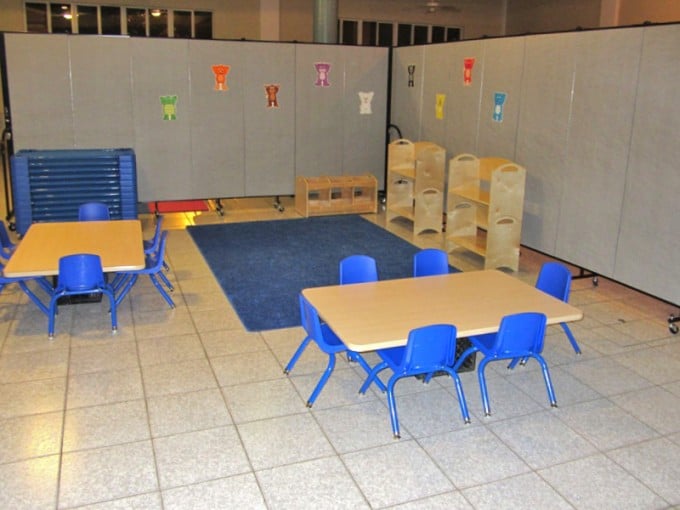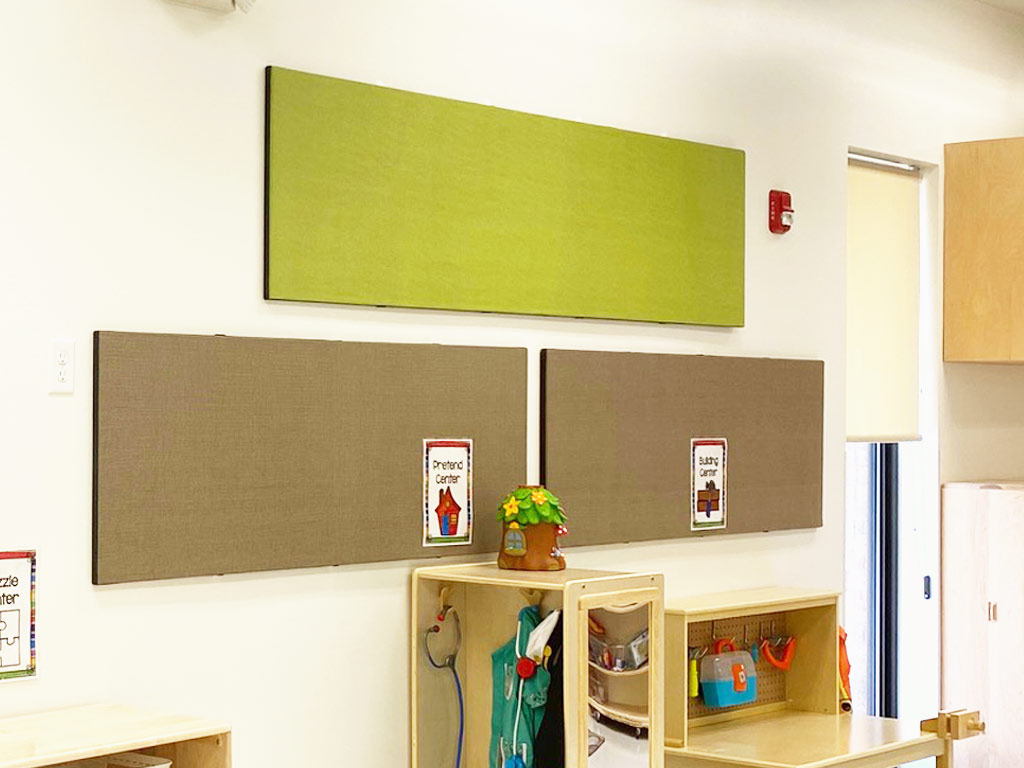Designing a Special Education Classroom for Optimal Learning with Room Dividers
Market: Education
Crafting an optimal learning environment demands an unwavering commitment to inclusivity, especially for neurodivergent students or those with special needs. These learners, nearly 7.5 million students in the U.S. alone, often grapple with heightened sensory sensitivities, where excessive noise, visual clutter, and spatial constraints can pose significant challenges. As a special education professional, your role in maximizing their potential is paramount. And room dividers are an indispensable tool to change your classroom into a better learning space.

Designing Learning Zones
By strategically incorporating room dividers into the classroom, educators can establish distinct learning zones, each tailored to specific student needs and activities. This approach fosters a sense of order and predictability, which is essential for students with sensory processing disorders. Moreover, room partitions offer the flexibility to adapt the space to accommodate varying instructional methods, from large group instruction to small group collaboration and individualized learning.
You can roll and maneuver your Standard Room Divider into various formats, like C- or L-shaped configurations, as well as in a straight line, to accommodate to the day’s agenda. Or use the Straightflex Sliding Divider Freestanding to open and close your portable partition in a straight formation with sliding hinges, making it easy to expand to the desired length.
To optimize classroom flow and student independence, establish distinct learning zones:
Quiet Zone: A sanctuary for focused work, reading, or sensory breaks.
Collaboration or Group Zone: A dynamic space for group projects and peer interaction.
Teacher’s Zone: A dedicated area for planning, assessment, and one-on-one instruction.
Sensory and Exploration Zone: A tactile space for hands-on learning and creative expression.

Clear visual cues, such as signs or symbols, should demarcate each zone, enhancing student orientation and autonomy. This can easily be done thanks to our room divider’s tackability. You can use pushpins to tack up the signs, as well as visual supports and posters for learning, like the alphabet, number line, calendar and daily schedule, and more.
Reducing Distractions
Many students with special needs experience sensory overload. To create a calming learning environment, minimize distractions and noise. Room dividers can transform a classroom by creating defined spaces, reducing sensory input, and providing students with personal areas to decompress and self-regulate. This focused atmosphere helps students concentrate better and feel less anxious.
Unless it’s slated time for physical activities or games, avoid large, open spaces in your classroom. Empty areas can encourage students to run, especially if they’re around furniture that can be used as a track. On the other hand, don’t clutter the room with too many dividers or obstacles. The best approach is to use furniture and dividers to create specific areas for different activities. This helps to prevent students from using open spaces for unwanted behavior and makes the classroom more organized and efficient.
And avoid excessive bright colors and clutter on walls. Focus on essential learning materials and store unnecessary items away. This minimalist approach helps students concentrate and reduces sensory overload. Remember, the goal is to create a classroom where every student feels safe, calm, and supported.
Managing Noise Levels
A benefit of room dividers is their ability to mitigate noise levels. Excessive auditory stimulation can be overwhelming for many students, hindering their ability to focus and learn. For instance, a quiet zone shielded by a Standard Room Divider — with our closed-cell honeycomb core — can provide a sanctuary for students who need to escape sensory overload, as it reduces noise by an impressive 55%.

Haven Acoustic Wall Panels prevent echoing and reverberations that overwhelm sensitive ears. This quieting effect brings a multitude of benefits: improved speech intelligibility for clear instruction and participation, a calmer and less anxiety-provoking environment for students, optimal conditions for language development, and even better behavior management through reduced noise-induced disruptions. You can further reduce noise with other design elements like thick, soft rugs, curtains, and other comfy furnishings.
Leading Classroom Layout Solutions
The implementation of room dividers in special education classrooms is more than just a design choice; it’s a strategic decision that can significantly enhance student outcomes. By carefully considering the specific needs of your students and the layout of your classroom, you can effectively utilize room dividers to create a learning environment that fosters focus, reduces sensory overload, and promotes academic success.
Contact Screenflex to explore our range of high-quality room dividers and discover how they can elevate your students’ educational experience.